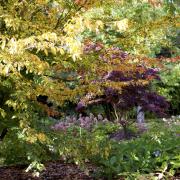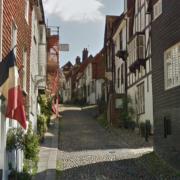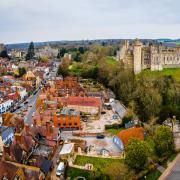Gardens allow us to express our personal design ethos just as does with interiors. Whatever garden style you would like, its essential to use plants that will thrive in your conditions. Consider also the location and architectural style of your home. That said you can however choose to compliment or dramatically contrast the look of your landscape to the structures, create an overall style or unexpected garden rooms within a space. Whether you’re trying to discover the right feel for your garden, or have been gardening for years, visiting local gardens and nurseries, browsing magazines and books, or researching online, you’ll find plenty of inspiration. From flower-filled cottage gardens to sleek minimalistic contemporary options, or exotic looks from far-away lands to naturalistic, wildlife-friendly spaces, the choice is yours.
It’s helpful to get to know the elements of different styles to hone your plans. Explore the different moods and looks to find the perfect fit. Both town and country gardens, large or small, can be an extension of your indoor living space, and allow you to have some fun and get creative to express yourself.

Traditional styles
The classic English country garden look has evolved over the centuries, with formal clipped hedging, decorative topiary, structure infilled with flowers, whimsical follies, geometric allées contrasted with romantic, meandering paths, blending both formal and informal areas, often with garden ‘rooms’, and is much emulated across the globe. From the humble peasant’s garden of medicinal and edible plants to the acreage of ornamental gardens around stately homes, the elements have been adapted and remain popular today for their charm and beauty. These ideas don’t have to be just on a large scale and can be incorporated into small gardens. Think of the juxtaposition of structure contrasted with frothy planting, abundant with classic flowers and foliage, use traditional hard landscaping materials, soften paths with planting, add a simple water feature and traditional furniture. Elegance, care, symmetry and balance are all to be kept in mind. Influences such as Gertrude Jekyll with her colour graduation and themes in herbaceous borders remain today, in a softer, looser style. The balance of formality and informality is often seen with formal areas by the house, merging into a more relaxed style as you progress further away, to maybe an orchard carpeted with meadow flowers and embracing borrowed views beyond.
On a smaller scale a riotous cottage garden is also a traditional style, epitomised by the picture postcard perfection of a chocolate box thatched cottage dreamily clad with roses over the door and hollyhocks and other old-fashioned favourites jostling happily together in pretty garden beds. Soft lines, weathered materials, vintage detailing, heirloom plants and an artless unstructured look define the cottage style. The vibe is relaxed, informal and joyous. There are no strict guidelines or set rules to follow, though as with any garden you need to plan the initial layout and planting. Then you are in a partnership with nature, as you can’t totally control the evolution of the space, allowing plants to self-seed and become interwoven surprises, with your task of editing and augmenting as needed. There is both a sense of nostalgia and of freedom with a cottage style, which is quite irresistible, and the breaking out of constraints is cathartic as well. This traditional style has remained popular and has become a mix of modern plants and old-fashioned favourites with an ethos of bio-diversity and a more resilient, holistic approach, combining edibles and ornamentals. The striving for sustainability and self-sufficiency echoes the original intent and remains an inspiration. Romantic, pretty, effervescent and fun, this is a style adaptable for the country, town or city garden.

Modern gardens
In contrast modern designs are more minimalistic, with clean, paired back lines and clearly defined and planned architectural planting in drifts and groups. This sense of simplicity can be applied to large and small gardens, balconies and courtyards. Lifestyle, proportion, viewpoints and function are at the forefront. Modernist gardens often rely on geometry to make a bold statement with the architecture of the house, connecting the outdoor living space seamlessly with large folding doors that disappear and bring the outside in and the inside out. How the space or spaces are used is important and considered carefully. Innovative materials, such as glass, crushed concrete and metal, and a controlled and simple plant palette, unified across the landscape, add to the sleek look. Balancing aesthetic and functional elements is expressed for example with striking water features in corten steel, permeable surfaces, drainage channels and contemporary furniture. Colours tend to be monochromatic but you don’t need to be restricted and don’t be concerned if you don’t have a modern home as this style also works well as a contrast to traditional homes.

Naturalistic landscapes
Championed since the Victorian times with the likes of gardener and author William Robinson, wilder, more natural eco-friendly landscapes have really come to the fore since plantsman and designer Piet Oudolf created the recognisable style that has defined contemporary garden design for the past 20 years, and is much emulated. Rather than replicating nature, this is a stylised and contrived rendering of it. Oudolf describes it as ‘a controlled, edited and maintained version of nature, which gives the impression of the wild’. Characteristics include swathes, drifts and large clumps of long-flowering perennials with ornamental grasses in a prairie style, organic shapes and lines, colours and textures, and an appreciation of plants after they have flowered by leaving seed heads to stand over winter, both for their architectural beauty and as wildlife habitats. Plant communities of hardy, reliable plants are used that offer height, texture, colour and also look good when they are dead. Grasses are the matrix plants that form the basis of the drifts, with other plants interwoven. The style works on small and larger scales – on small limit your palette, for large increase the size of the drifts and planting. To appreciate the plants from all angles include meandering paths that weave through the landscape.

Exotic looks
We have been plant hunting and bringing back ideas from our holidays for centuries. You may like to create a small Japanese garden, transform your backyard into a semi-tropical jungle or take ideas from the relaxed Mediterranean vibe. Japanese gardens embrace harmony and tranquillity and use elements such as naturalistic ponds and waterfalls, carefully placed rocks, lanterns, bridges, tightly clipped plants and a subdued palette. For a tropical look use large leafed plants such as palms and tree ferns, dazzling foliage plants for the understorey, still water features and earthy textured ornaments. Your garden may suit the warm tones of the Mediterranean with rustic materials, drought tolerant plants, sunshine colours, fragrant herbs and relaxed seating.
Feeling inspired to have a go at creating or adding to your garden space by selecting a style that resonates with you? Enjoy and embrace the possibilities.

Get the look
• Take a critical look at your site, the architecture of your house, aspect and climatic conditions as well as what grows well in your neighbours’ gardens and the local area
• Consider whether you want to echo or contrast with the period of your house
• Then the big question – what is your garden style, what do you like best?
• Formal – geometry, structure, symmetry, precision, simplicity, order
• Informal – curved lines, free-flowing planting, an aim to mimic nature
• Decide the look you’re after and what will go where
• While it helps to draw a plan on paper you can also start by drawing it in your mind
• Whether starting from scratch or reshaping an existing garden area, start with a ‘needs list’ for the features and plants that are essential to the look
• Also have a ‘wants list’ of features you may like to add to allow for them in your broader plan
• Consider how you will use the space – dining, relaxing in for example
• Are you after a practical space or a plant-filled haven?
• Don’t follow to the letter as if a style is a recipe, instead think of the mood
• With any style aim for bio-diversity and resilience
• Feel free to merge and blend influences from different styles to suit your vision
• Gardens are a personal creation

Gardens to visit
• Judy’s Cottage garden, Worthing BN13 2AE
Small town garden in eclectic cottage style
Open with the National Garden Scheme
Friday 6 Sept (10.30 – 3.30)
Adm £5, chd free
Web: ngs.org.uk
• Knightsbridge House, Hellingly, BN27 4HH
Prairie style, naturalistic planting
NGS: Sat 7 Sept (2-5)
Adm £7.50, chd free, home-made teas, plant sales
Web: ngs.org.uk
• Parsonage farm, Kirdford, RH14 0NH
A grand scale formal garden
NGS: Sun 8 Sept (2-6)
Adm £8, chd free, home-made teas
Web: ngs.org.uk
• Langney and Willingdon Garden Trail
Four gardens are open with a range of coastal inspired styles, from exotic and jungly with tropical plants to a laid back Mediterranean theme
NGS: Sunday 8 Sept (1-5)
Combined adm £7, chd free
Web: ngs.org.uk
• Pashley Manor, Ticehurst, TN5 7HE
Classic English style garden
Open to 28 Sept, Tues to Sat, BHM, and special event days (10-5)
Adm £14.50, chd 6-16, £6
Web: pashleymanorgardens.com
• Sussex Prairie garden, Henfield, BN5 9AT
The name says it all, drifts of perennials and grasses
5 days a week, closed Mon and Tues apart from BHM
1 June – 15 Oct (1-5)
RHS Partner garden
Adm £12, chd £6
Web: sussexprairies.co.uk
For NGS: Sun 8 Sept (1-5)
• West Dean Gardens, West Dean, PO18 0RX
Formal and informal areas
Daily, summer – to October 31 (10.30-5)
winter Nov- Feb (10.30-4) £5, £2.50
Adm £12/£13.20 GA summer
Web: westdean.org.uk



























